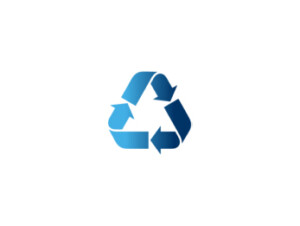
3 Reasons to Wipe Data from Your Hard Drives Before Recycling
Getting rid of your retired electronics and IT equipment? Before you recycle…
When used electronics reach the end of their useful lives and are discarded, sold, or delivered to a recycler, they are referred to as e-waste, electronic waste, e-scrap, or end-of-life electronics. The UN defines e-waste as any abandoned devices that have a battery or socket and contain harmful and poisonous materials like mercury that can seriously endanger both human and environmental.
A staggering 57.4 million tons of electronic garbage will be produced globally in 2021, according to the UN, with each individual on Earth producing an average of 7.6 kg. Only 17.4% of this electronic waste, which is made up of both hazardous and valuable elements, will be noted as having been correctly gathered, handled, and recycled. Numerous initiatives are being attempted to address this developing issue, but none of them will be truly successful without consumer participation and the right kind of education on the environmental impact of recycling e-waste.A further indication that e-waste is one of the biggest and most complicated waste streams in the world comes from the International Telecommunication Union (ITU). Only 9.3 million metric tons (17%) of the 53.6 million metric tons of e-waste that was produced worldwide in 2019 was tracked as being collected and recycled, based on the Global E-waste Monitor 2020. Effective resource recovery and safely recycling e-waste are crucial for economic value as well as for the environment and people’s health because e-waste contains valuable materials as well as dangerous poisons. The disparity between the quantity of electronic waste generated and that which is correctly recycled highlights the urgent need for all parties, especially the youth, to solve this issue.
Environmental Risks
E-waste can be harmful, is not biodegradable, and builds up in the land, air, water, and other living things in the environment. Toxic substances are released into the environment when methods like open-air burning and acid baths are employed to recover valuable elements from electronic components. Along with high levels of contaminants like lead, mercury, beryllium, thallium, cadmium, and arsenic, these practices can also expose workers to polychlorinated biphenyls (PCBs) and brominated flame retardants (BFRs), which have been linked to irreversible health effects like cancer, miscarriages, neurological damage, and lower IQs.In accordance with the research, improper recycling of e-waste is leading to a large loss of key raw materials, including precious metals like cobalt, neodymium, and indium, which are used in flat-panel TVs and neodymium magnets for motors, respectively (batteries). Rare earth minerals are mined with great pollution, therefore very little of them are retrieved via informal recycling. However, it can be challenging to extract metals from e-waste; for instance, only 30% of cobalt is recovered in total. However, batteries for electric cars, smartphones, and laptops are in high demand for the metal. The energy efficiency of recycled metals is also two to ten times greater than that of metals made from new ore. Moreover, compared to mining gold from the earth, mining used electronics results in 80% fewer carbon dioxide emissions per unit of gold.
Climate Change
It is also important to take into account how climate change is impacted by technological products. Every product ever generated has a carbon footprint and causes global warming that is caused by humans. Ten tons of CO2 might be released during the production of one ton of computers. When the carbon dioxide released across a device’s lifetime is taken into account, it mostly happens during production, prior to customers purchasing a product. As a result, reduced carbon production procedures and inputs (such using recycled raw materials) and product lifetime are crucial factors in determining the overall environmental impact.
Lack of Recycling E-Waste
The world has low recycling e-waste rates. Only 35% of e-waste is reportedly collected and recycled effectively, even in the EU, which is the world leader in this area. The average amount is 20% worldwide; the remaining 80% is unaccounted for, with much of it being used as landfill and eventually being buried for millennia. Electronic garbage cannot biodegrade. The worldwide electronic sector is severely hampered by a lack of recycling, and as gadgets multiply, get smaller, and get more complicated, the problem only gets worse. Currently, it costs money to recycle various forms of e-waste and recover materials and metals. A more difficult issue is the remaining bulk of e-waste, which is primarily made of polymers mixed with metals and chemicals.
E-Waste Exposed
It looks like an enormous challenge to address this expanding trash problem that contains dangerous elements that are regarded to be harmful to human health upon exposure due to the lack of ease and potential expenses for recycling e-waste. The following startling e-waste statistics could serve as a catalyst for action to preserve the environment and stop the annual loss of resources that amounts to a sizable sum of money dumped in landfills.
Electronic Waste Recycling
At UPCYCLE USA, we make it easy for organizations to do the RIGHT thing with their End of Life Electronic (EOL) IT Equipment. Honest, reliable & secure electronic waste recycling services.